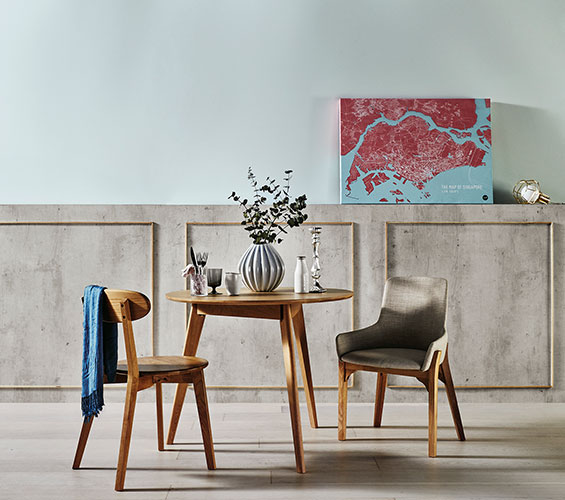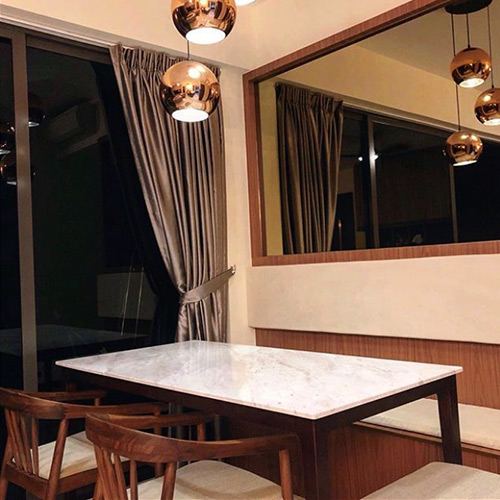How Ergonomics Transforms Outdoor Chair Design
The simple act of sitting outdoors—whether enjoying a morning coffee on the patio, dining with friends under the stars, or lounging by the pool—should be a comfortable experience that supports your body and enhances your outdoor enjoyment. Yet many outdoor chairs fail to deliver on this fundamental promise, leaving users with aching backs, stiff necks, and an urgent desire to stand up. The science of sitting, particularly in outdoor environments, represents a fascinating intersection of ergonomics, materials science, and thoughtful design that can transform your outdoor experience from merely tolerable to genuinely rejuvenating.
Outdoor chair design isn't just about aesthetics—it's about creating a harmonious relationship between the human body and its environment. When designed with proper ergonomic principles, outdoor seating can prevent discomfort, promote good posture, and even contribute to overall well-being. This article explores the complex science behind comfortable outdoor seating and how designers are applying these principles to create chairs that offer ultimate comfort in the great outdoors.
The Ergonomics of Outdoor Seating
Ergonomics—the science of designing products to fit the human body—forms the foundation of comfortable chair design. Unlike indoor furniture, outdoor chairs must contend with additional challenges: varying temperatures, exposure to elements, and often more limited adjustment options.
Key ergonomic factors in outdoor chair design begin with proper lumbar support. The natural curve of the spine requires support to maintain its healthy S-shape. Without adequate lumbar support, users tend to slouch, placing strain on the lower back and potentially leading to discomfort or pain. Well-designed outdoor chairs incorporate subtle contours or adjustable supports that maintain this natural spinal alignment.
Seat height and depth significantly impact comfort. When a seat is too high, pressure increases on the back of the thighs; too low, and the knees rise above the hips, creating back strain. Ideal seat depth allows users to sit with their backs against the backrest while maintaining 2-3 inches of clearance between the seat edge and the back of the knees. This prevents pressure on the sensitive popliteal area, where important blood vessels and nerves run close to the surface.
Armrests play a crucial role in reducing strain on the shoulders and neck by supporting the weight of the arms. Properly positioned armrests should allow the shoulders to remain relaxed and the elbows to bend at approximately 90 degrees.
Understanding Pressure Distribution
The way body weight distributes across a seating surface directly correlates with perceived comfort. When sitting, the ischial tuberosities (sitting bones) bear a significant portion of upper body weight. Poorly designed chairs concentrate pressure on these small areas, leading to discomfort after even short periods.
Advanced outdoor chair designs use contoured surfaces and strategic cushioning to distribute weight more evenly across the sitting surface. This reduces pressure points and increases the time a person can sit comfortably. Some high-end outdoor furniture manufacturers now employ pressure mapping technology—originally developed for medical applications—to visualize how different chair designs distribute body weight.
The relationship between pressure distribution changes dramatically between upright and reclined positions. In reclined positions, body weight shifts from the sitting bones to a larger surface area including the back and thighs, which explains why lounging often feels more comfortable for extended periods than upright sitting.
Materials Science in Outdoor Chair Design
Structural Materials
The structural framework of outdoor chairs must balance strength, weight, durability, and resistance to environmental factors. Aluminum has become a popular choice due to its lightweight nature, resistance to rust, and ability to withstand temperature fluctuations without expanding or contracting significantly. Steel offers superior strength but requires proper treatment to prevent corrosion in outdoor settings.
Traditional wood options like teak contain natural oils that resist water damage and insect infestation, making them naturally suited for outdoor applications. Modern alternatives include eucalyptus, which offers similar properties at a lower price point. Synthetic materials like high-density polyethylene (HDPE) provide exceptional durability and weather resistance while often incorporating recycled materials.
Cushioning and Fabrics
The evolution of outdoor cushioning materials has dramatically improved comfort. Early outdoor cushions used simple foam that quickly degraded when exposed to moisture and sunlight. Today's outdoor cushions utilize multi-density foams with open-cell structures that allow water to pass through rather than being absorbed, facilitating quick drying and preventing mold growth.
Fabric technology has similarly advanced, with modern outdoor upholstery featuring UV-resistant properties that prevent fading, water-repellent treatments that allow rain to bead off rather than soak in, and antimicrobial properties that resist mildew. Solution-dyed acrylics like Sunbrella have revolutionized outdoor fabrics by incorporating color throughout the fiber rather than just on the surface, dramatically improving fade resistance.
Posture Support Mechanisms
Different outdoor activities demand different sitting postures. Dining requires a more upright position that facilitates eating and conversation, while relaxation often calls for a reclined posture that reduces muscle activity.
Zero-gravity chairs, inspired by NASA technology, position the body with the legs elevated above the heart level, distributing weight evenly and reducing pressure on the spine. This position minimizes muscle tension and has been shown to reduce stress on the cardiovascular system.
Reclining mechanisms in outdoor loungers have become increasingly sophisticated, offering multiple positions that transition smoothly from upright to fully reclined. The best designs maintain proper support throughout the range of motion, particularly for the lumbar region which can lose support in poorly designed recliners.
Innovative Design Features
Today's outdoor chairs incorporate numerous innovations that enhance comfort. Adjustable headrests accommodate different user heights and preferred neck positions. Articulating backrests contour to the user's spine in various positions. Some designs feature adjustable lumbar support that can be positioned precisely where needed.
Swivel mechanisms allow users to change orientation without awkward repositioning, while gentle rocking motions have been shown to reduce stress and promote relaxation. These features, once reserved for indoor furniture, have been engineered to withstand outdoor conditions through sealed bearings and weather-resistant components.
Sustainability in Outdoor Chair Design
Sustainability has become a central consideration in outdoor furniture design. Recycled materials, particularly plastics recovered from ocean waste, are increasingly used in frame construction. Some manufacturers have developed closed-loop systems where they reclaim and recycle their own products at the end of their useful life.
Durability represents perhaps the most important sustainability factor—chairs that last for decades rather than seasons reduce resource consumption and waste. The best outdoor chair designs balance immediate comfort with long-term performance, using replaceable components that extend the furniture's lifespan.
Testing and Validation Methods
The science of sitting relies heavily on empirical testing. Leading manufacturers subject their designs to rigorous evaluation including pressure mapping studies that visualize how body weight distributes across seating surfaces. Accelerated weathering tests simulate years of sun, rain, and temperature fluctuations to ensure materials will perform in real-world conditions.
User comfort studies employ both subjective feedback and objective measurements like muscle activity and posture analysis to evaluate designs. These methodologies have migrated from laboratory settings to practical applications in furniture design, creating outdoor chairs that truly deliver on comfort promises.
Specialized Designs for Different Settings
Different outdoor environments demand specialized design approaches. Poolside loungers incorporate materials that resist chlorine and dry quickly after water exposure. Dining chairs prioritize proper height relationships with tables and support for an upright posture. Portable options balance comfort with weight and folding mechanisms.
Age-specific designs recognize that body needs change throughout life—chairs for older adults often feature higher seats that facilitate easier standing and sitting, while designs for younger users might emphasize durability and flexibility of use.
The Future of Outdoor Comfort: Where Science Meets Relaxation
The science of sitting outdoors continues to evolve as researchers gain deeper insights into human biomechanics and as materials science advances. Tomorrow's outdoor chairs will likely incorporate smart technologies that adapt to individual users, sustainable materials we haven't yet imagined, and designs that respond dynamically to changing conditions.
What remains constant is the fundamental goal: creating outdoor seating that supports the human body so effectively that the chair disappears from consciousness, allowing users to fully immerse in the outdoor experience. The best outdoor chair isn't one you notice for its comfort—it's one that allows you to forget you're sitting at all, as you connect with nature, companions, or simply the pleasure of being outdoors.
By understanding and applying the science of sitting, manufacturers continue to push the boundaries of what's possible in outdoor comfort, transforming simple chairs into sophisticated tools for human well-being and enjoyment in outdoor spaces.



